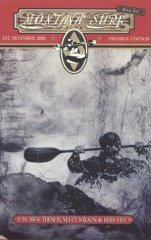
Ben Litz, Ben Stookesberry, Drew, Ira Vasguard, Lizzy English, and James
Unlike the more commonly traveled Grand Canyon of the Colorado and the Hells Canyon of the Snake, the Box Canyon of the Clarks Fork is relatively unknown and rarely explored. Those who do run The Box are rewarded with amazing rapids, spectacular scenery, and punishing portages. Everything seems huge once you are in there, so come prepared for an unforgettable adventure.
The Box is not a run for paddle-twirling and thrill-seeking. EVERYTHING must be scouted in the heart of the canyon because there are thousands of undercuts and sieves. In addition, there are two unscoutable, unportageable class five drops. It goes without saying that only seasoned class five paddlers should attempt this run.
|
Warning: Many of the portages in the Box begin as easy class four rapids that end in deadly drops with no way out, so aggressive boat scouting is NOT recommended. Also, there is no escape on foot for most of the run as the canyon walls lock you in.
In August 2003, a group of seven paddlers ( three of whom had run the Box previously ) didn't recognize the entrance rapid to one of the mandatory portages, located just downstream of the rapid known as 'Leap of Faith'. All seven paddlers were swept over a fifty-foot, unrunnable cascade, flushing through a deadly series of caves and sieves in the process. Dan Crain lost his life in this incident and several others were seriously injured. Careful scouting is not only necessary, it is essential in order to survive the Box. |

The Honeymooner section contains a few class four and easy class five rapids that increase in difficulty as the river leaves the wide-open valley and enters the canyon. If Honeymooner seems challenging to you, it might be a good idea to become shuttle bunny. The rapids get bigger, harder, more undercut, and much more consequential the further downstream you go.
Typical class three boogie water and spectacular scenery in the Box Canyon.
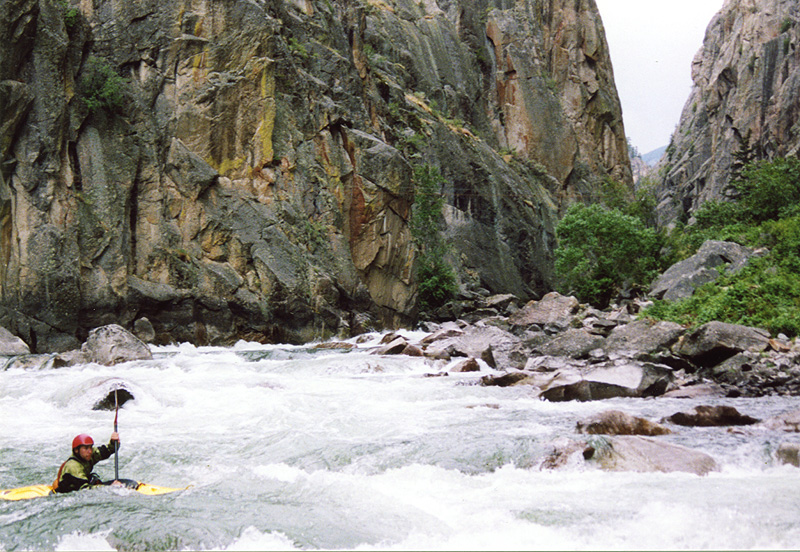
Once you see Crandall creek entering from the left, get ready to catch an eddy on the right and began the mile-long Green Monster portage. You can paddle a little farther downstream, but the farther you go the more difficult the portage becomes.
If you miss the last eddy ( it does not look difficult downstream ) you are in BIG trouble. There are small shredded chunks of boats that floated through the Green Monster scattered along the high water mark over the next twenty miles.
One reason we trudge through the mile-long Green Monster portage.
The Green Monster portage route starts on a faint trail along the right bank. Follow this trail until it disappears, and then pick a route up a massive boulder field until the river looks like a tiny stream far below. Once it looks feasible, pick a route back down to the river where you will find a decent trail and another third of a mile of portaging.
Ira, fifteen minutes into the punishing Green Monster portage.
It is well worth the short hike from the trail to a cliff overlooking the Green Monster. Parts of the long rapid are cliffed-out and look semi-runnable, but don't be fooled. At the end of the Green Monster the river goes over a waterfall, lands on massive boulders, then disappears underground.
Ira and Drew nearing the halfway point of the Green Monster portage.
Once you put back on the river there are four miles of breathtaking flatwater where you may see elk, moose, bear and local fishermen yarding in fat trout. The river slowly builds up to read and run class three rapids that slowly increase in difficulty. After three or four of these the river literally disappears in front of you at the end of a easy class three rapid. Catch an eddy next to a cliff on the left and shoulder your boat again for the Ankle Breaker portage.
The Ankle Breaker Portage would be dreaded and considered epic on any other run, but it is relatively easy compared to others in the Box.
At the bottom of the 'Ankle Breaker' portage.
At the base of Ankle Breaker is a beautiful beach and a deep, perfectly calm emerald section of river with eight hundred foot high cliffs rising straight from the water. Rapids begin to build in intensity below this until you get to 'Double Suck', the first class five rapid. Double Suck features two juicy pourover holes that can give you a good ride if you miss the move for either of them.
Shortly after Double Suck comes Deep Six, where the river funnels into a five-foot wide slot then drops fifteen feet. This rapid gets its name from the long downtimes paddlers experience here; you go so deep when you land that you can slowly count to six before surfacing. ( At higher flows an easy boof appears on the left ).
James drops into the rapid known as 'Deep Six'. If you don't get a boof here, you spend six seconds under water.
When a big horizon line appears and a thousand foot high cliff rises straight out of the river, catch an eddy on the right and scout Balls to the Walls, one of the fastest and biggest rapids on the river. Balls is a steep, sliding rapid with all of the flow funneled right next to the cliff wall.
This rapid is much steeper and harder than it looks from shore, and is guaranteed to give even the most experienced paddlers an enormous rush of adrenaline. The lower half of Balls to the Walls is mandatory but not overly difficult.
Ira enters 'Balls to the Wall'.
Ira in the middle of 'Balls to the Wall'.
Drew stern squirting half way down 'Balls to the Wall'.
Drew hitting the last huge hole in the first section of 'Balls to the Wall'.
Drew runs Snollieguster
The river calms for a short while before dropping out of sight at the next big portage. If you plan on hiking to the rim to camp there is a draw with a trail an eighth of a mile above the portage on the right. Hike about fifteen hundred feet up the draw to a dead end road, there is a nice camping spot where the road ends. Alternatively, you can camp at a great wide open spot a half mile down the road that overlooks the canyon.
The camp on the rim of the canyon.
When you see this horizon line it is time to catch an eddy on the right and hike out to camp at the end of day one or start of day two.
Ira, Drew, and james starting the portage early on day two.
Drew runs the rapid immediately below the first portage on day two.
Drew enjoying the morning sun below first portage of day two.
Ira runs a random class V in the Box. There are many unnamed class IV+ to V rapids on the run.
The first big rapid of the day is Russís Underworld, boof the rock in the middle of the river and then work to the right of the big boulder in the middle of the river. Stay right below here to avoid the numerous sieves waiting below.
A few more class four rapids lead to Dillworth, one of the longest and most intimidating rapids on the run. Dillworth starts with three six to eight foot ledges followed by two hundred meters of beefy holes and ledges.
Drew enters Dillworth.
Dillworth, from below.
Below Dillworth a few more class four to five drops that should all be scouted lead to one of the most photogenic and beautiful sections on the run. There is a calm gorge with colossal cliffs rising a thousand feet straight out of the water on both sides. This ends in a photogenic ten-foot drop with a nice lateral wave to boof off on the far left.
The canyon below Dillworth Rapid.
Next is the most infamous and difficult section of the river, Deliberation Corner. Deliberation is another unscoutable, unportageable class five drop, and it is very intimidating.
Deliberation starts with two ten-foot drops leading directly to a twenty-foot waterfall. If you flip on this falls you must instantly snap a roll and charge hard to the far right slot. ( The left and center are survivable, but I wouldn't want to go there ) the right slot is an unscoutable/unportagable eight-foot falls.
'Scouting' the forty-foot series of drops known as Deliberation Corner.. This is all you get to see before you run it.
This hole at the base of this falls is backed up by a boulder, has water pillowing off the cliff on the right, and water from the center channel backing the left of the hole. Swims in this hole are looooong and scary, and there is a huge blind class V rapid directly below it with only a one boat eddy for the swimmers to catch, ( they will still have to swim the next flatwater gorge ).
Ira points after pulling a swimmer out of the hole at Deliberation Corner.
Where most boats end up if you swim at Deliberation Corner, we had to leave this one and the swimmer embarked on a LONG hike out into the middle of nowhere. At lower water it is easy to hook a rope on lost boats, but it was getting late this day and the water was not low.
Looking upstream below Deliberation Corner.
Below Deliberation Corner the river goes through the tightest and deepest part of the canyon next before opening up and disappearing beneath a boulder. ( Portage left, and stay high to portage the upper half of Leap of Faith ). At this point you are just above Leap of faith, the second famous unscoutable, unportageable drop on the run.
The mandatory section of Leap of Faith features a fifteen-foot waterfall followed by a short rapid. Run the falls about four feet to the right of the boulder splitting the pool where you put in. A perfect boof flake follows a short slide on this falls, then land and quickly work your way to the far left channel.
This is all you can see before running Leap of Faith. This drop is unscoutable and unportagable.
James boofing the unscoutable, unportagable drop known as Leap of Faith.
Ben Stookesberry takes the blind leap of faith.
Below Leap of Faith is one spot where eddy hopping is not an option, as a mandatory portage waits just downstream below an innocent-looking drop. Before leaving the shallow riffles below Leap of Faith catch an eddy early on the left and start portaging. The beginning of this portage looks runnable, but a rock guards the eddy so do not go to far here ( This is where the paddlers went too far in August of 2003, with disastrous consequences ).
Immediately below the last portage is Dead Indian Falls, a spectacular side falls which drops hundreds of feet into the river. This falls marks the end of the canyon and the difficult whitewater. Below here you only have to negotiate a few miles of easy class four and flatwater and you have survived the Box.
Ira at the bottom of the last portage
For more info, pick up the guidebook Montana Surf, shown below. This excellent guidebook has tons of info on the Box and many other runs in the area. You can purchase this book on Amazon.com.
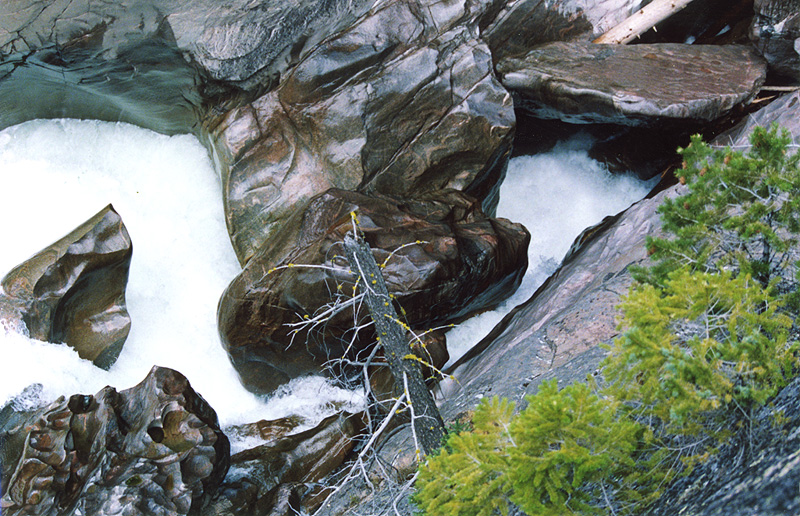
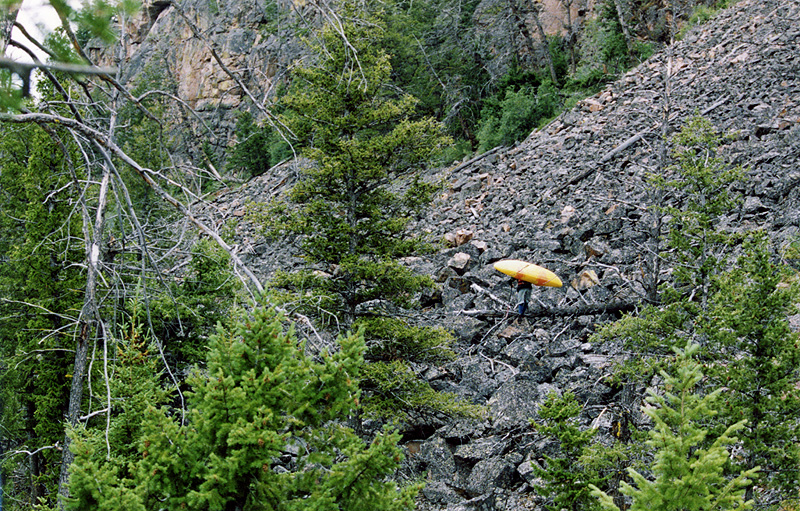
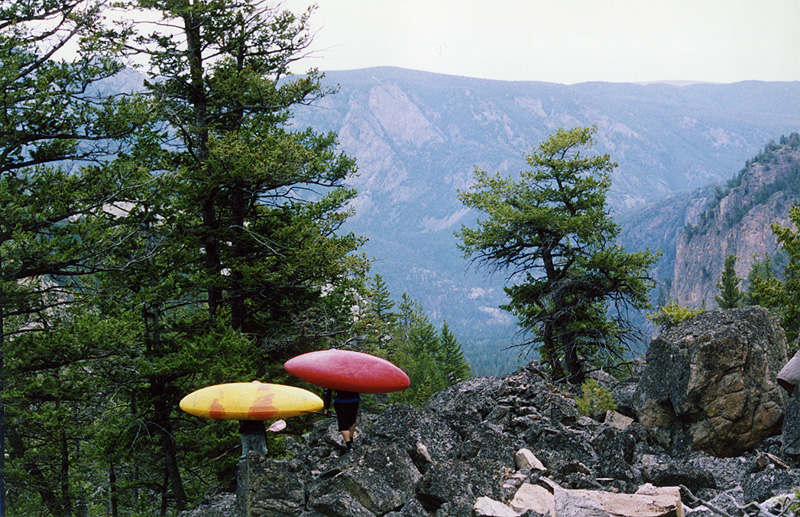
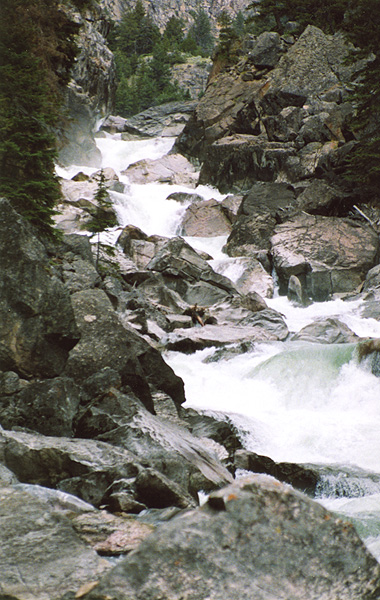
At higher flows like we had ( 1,300 cfs ) it is easy to boof and avoid the downtime.
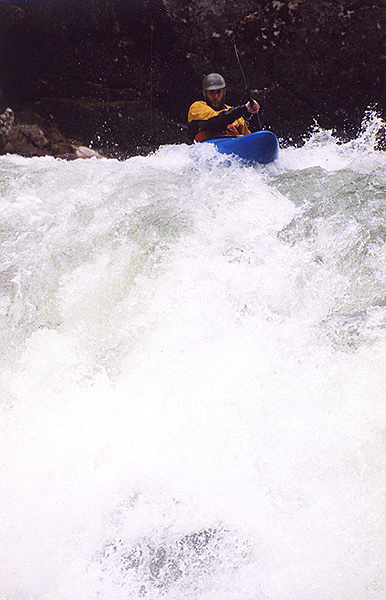
Going Deep..
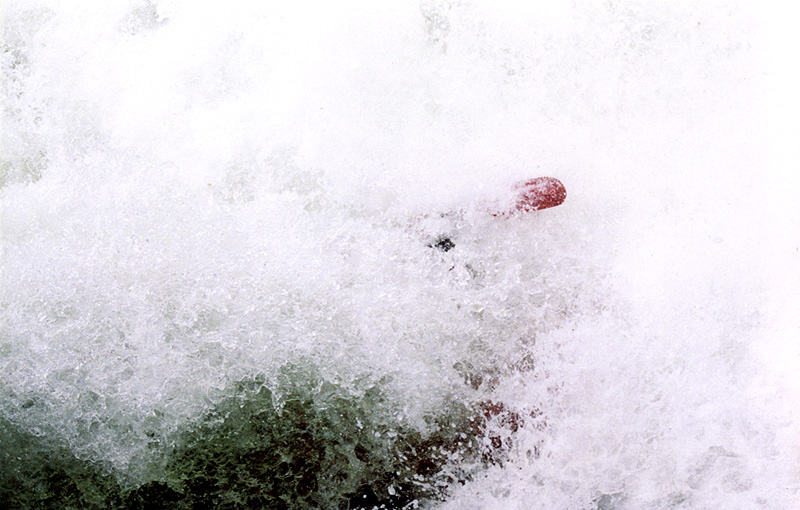
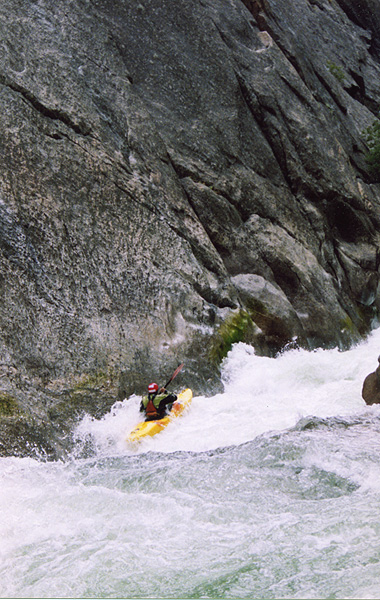
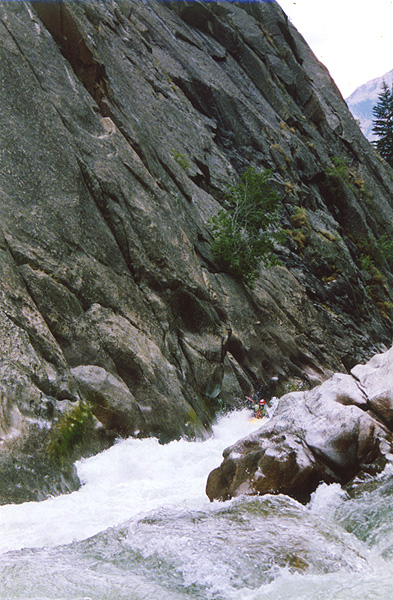
Snollieguster is up next. This steep rapid features two juicy holes ending in a sticky, riverwide ledge.
This rapid is MUCH steeper than it looks in the picture.
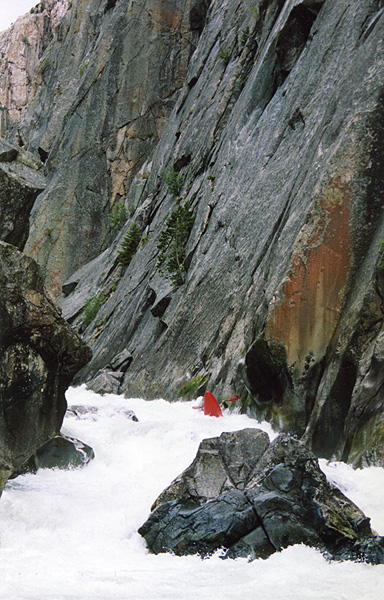
This hole is sticky but you are going so fast it doesn't stop you.
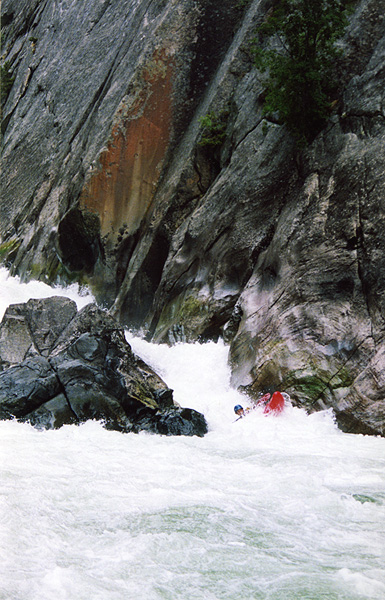
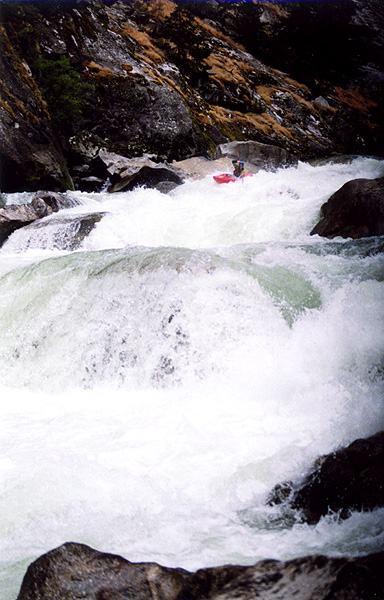
There are a lot of fun class IV to V+ runs in the area so there is usually a big gathering of boaters camping here.


Day two contains the majority of the rapids, but they are bigger and cleaner. Every drop on day two should be scouted as there are many hidden undercuts and sieves. You will be nice and warmed up before even getting into your boat after the hike down and the third mandatory portage of the run. It is generally easiest to portage on the right but if you feel like crossing the river the left is just as hard. Put in below the twenty foot waterfall at the end of the cascading rapid.
Many people like to get the portage out of the way the night before to make the long second day a little shorter.
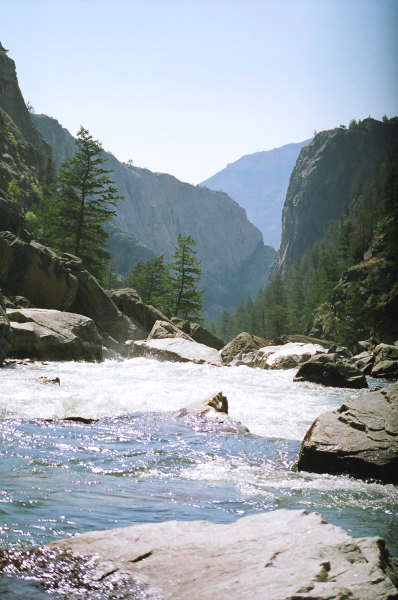
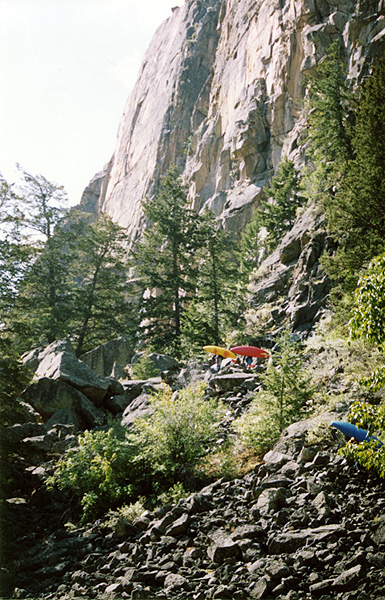
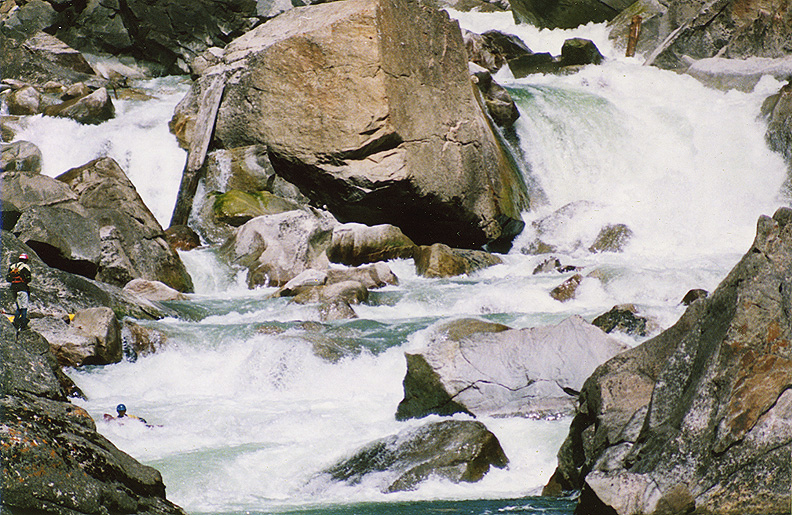
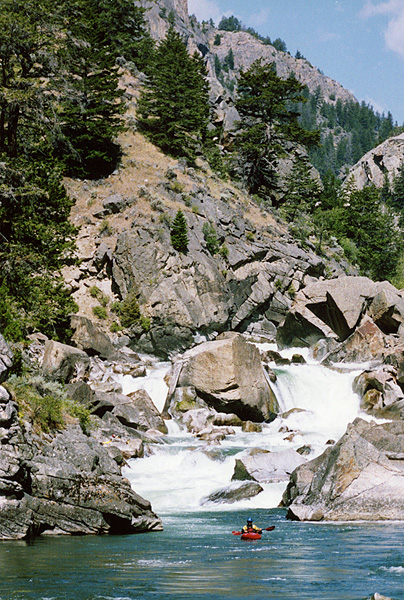
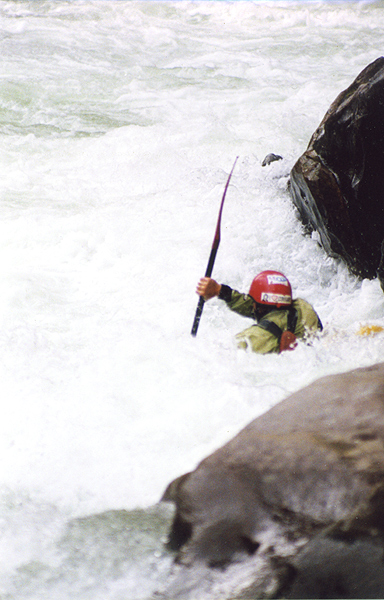
On the left, Drew running one of the few drops without undercuts of sieves as Ira waits above.
This rapid is about a third of a mile above Dillworth. On the right, same rapid, zoomed out.
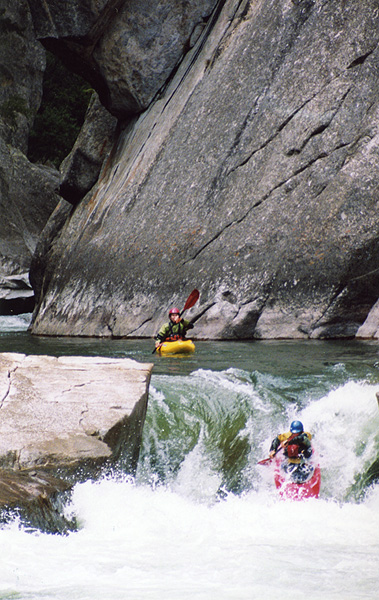
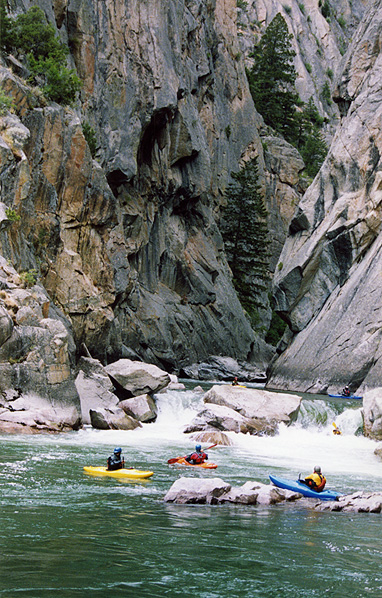
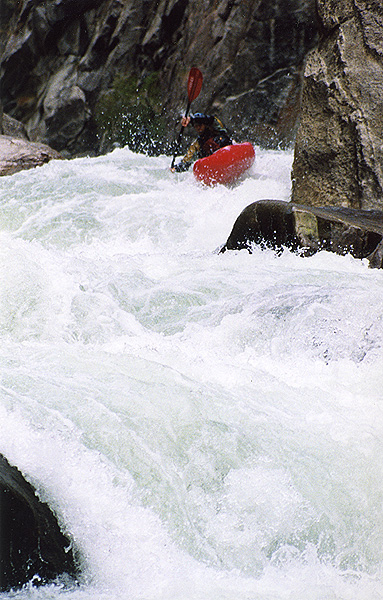
A sequence of Ben Stookesberry entering Dillworth ( left ) and preparing to boof just below ( right ).
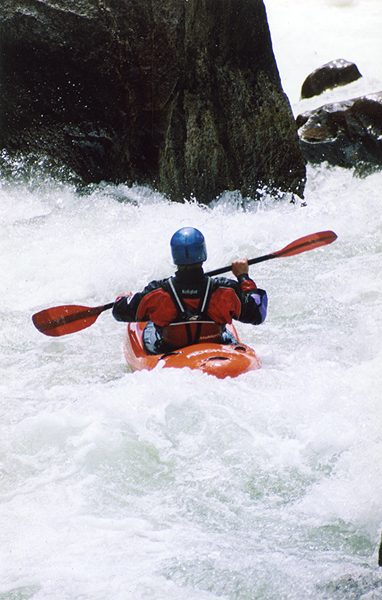
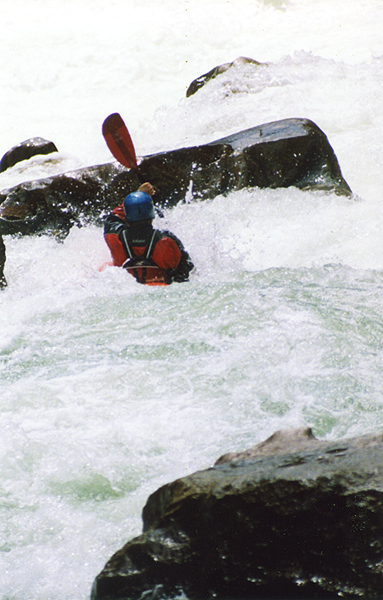
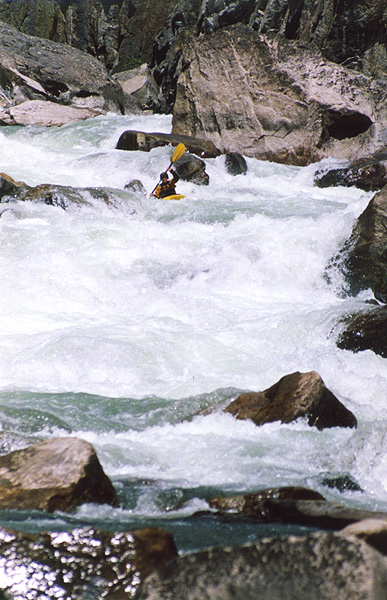
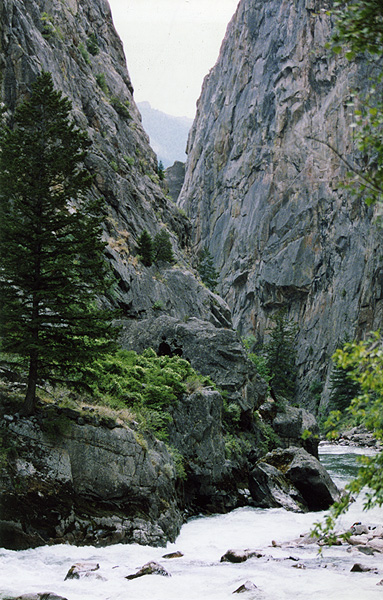
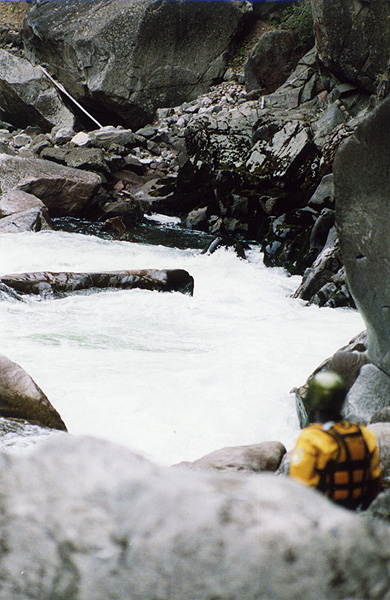
Ben Stookesberry nailing the mandatory right-slot boof at Deliberation Corner.
Above this drop are two ten-footers, and a twenty-footer is just out of view downstream. The middle of this drop is sieved out and should be avoided.
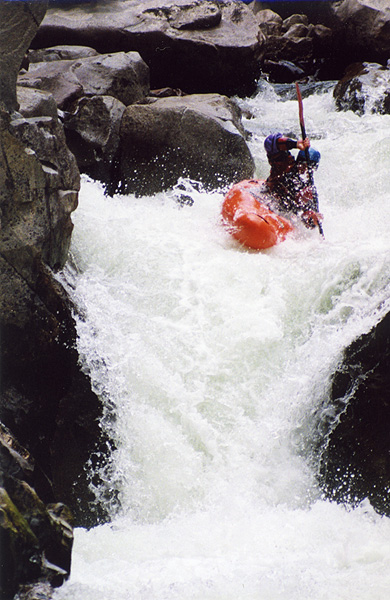
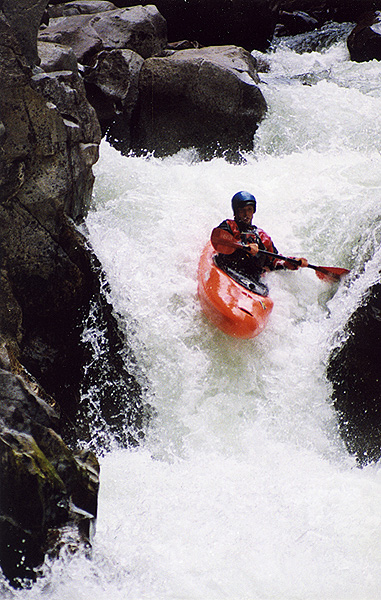
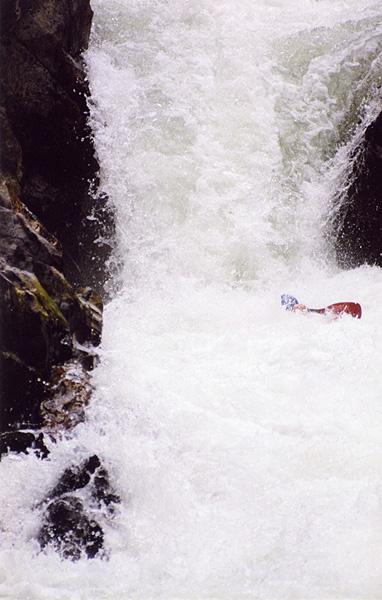
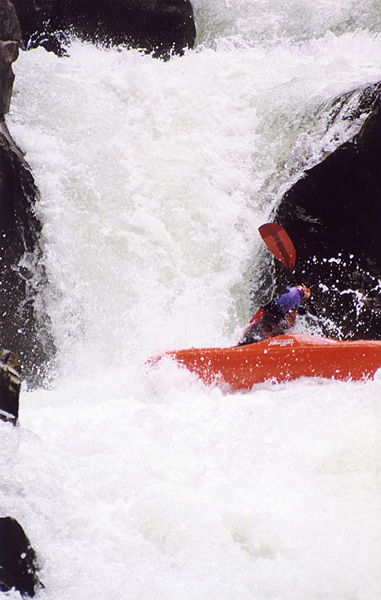
The eight-foot slot above them is unscoutable, unportagable, and sticky!
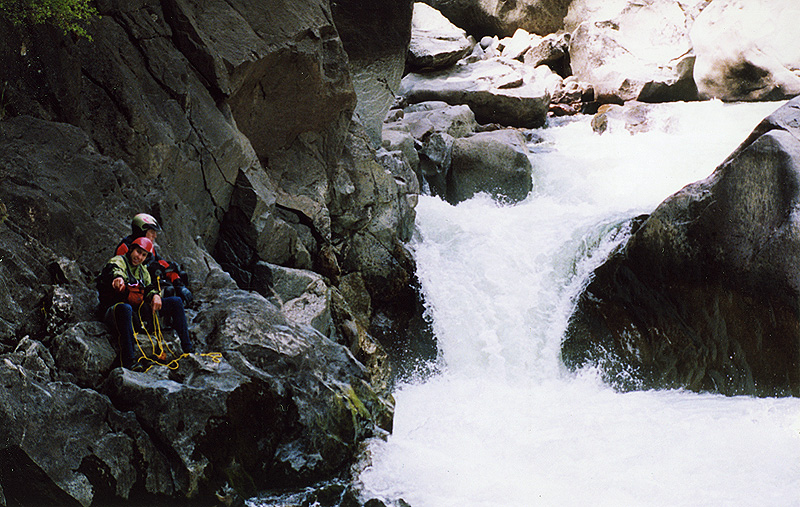
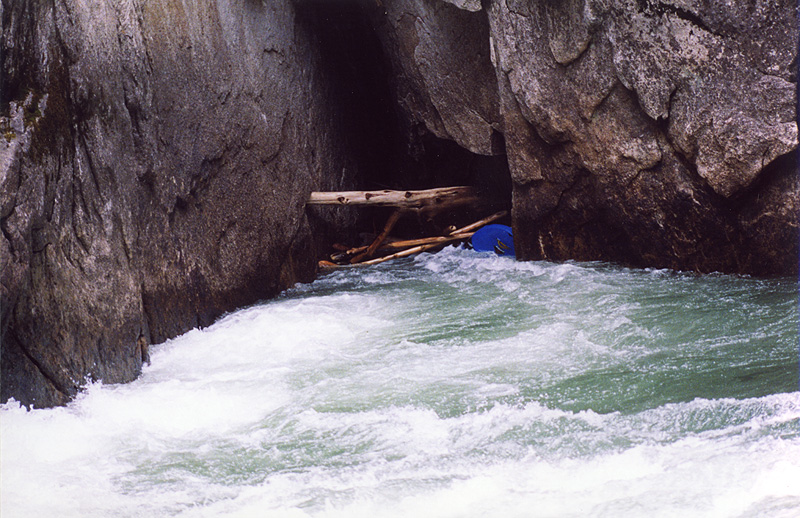
If you swim and don't catch your boat, you will have to swim this gorge to get out. Stay left at the end of it.
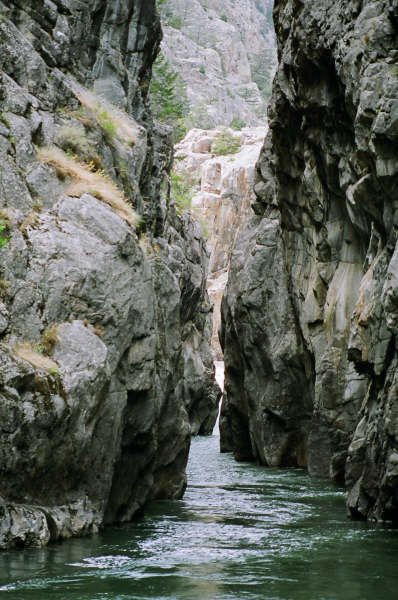
The first photo shows Ira finally seeing where to go at Leap of Faith, he is right where he should be for the cleanest line, take a late right boof stroke so you land flat with hard left angle.
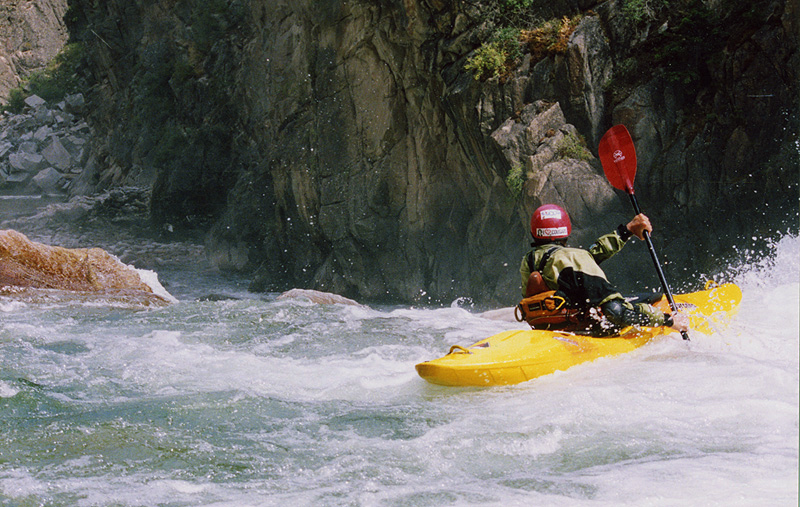
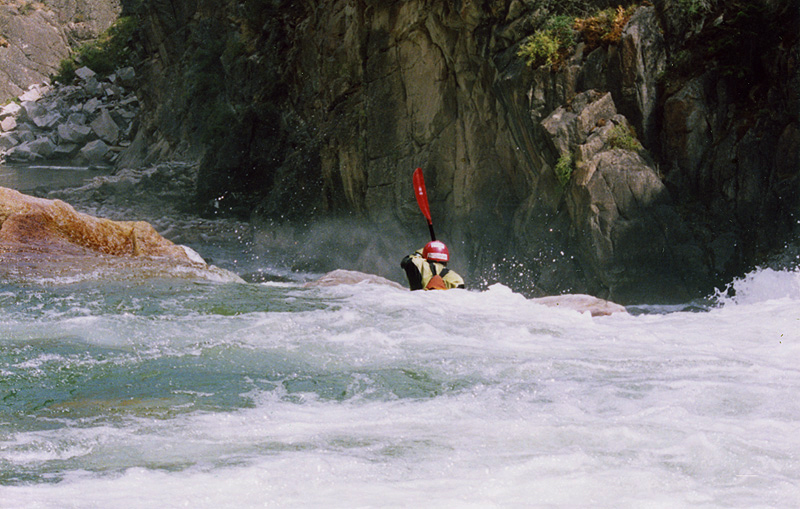
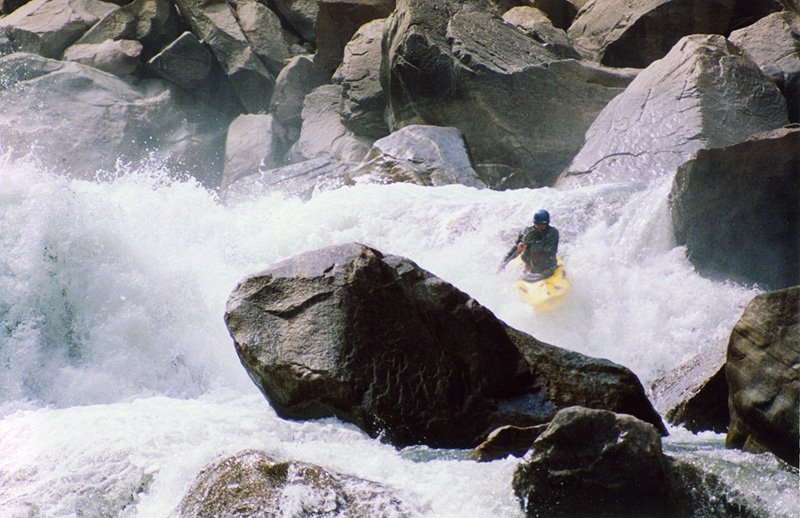
There is a put-in eddy right above him to avoid running the nasty section above the mandatory fifteen footer.
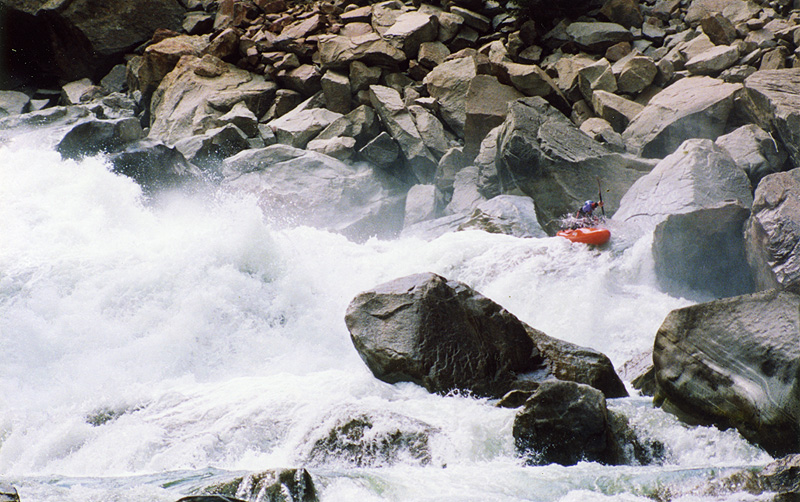
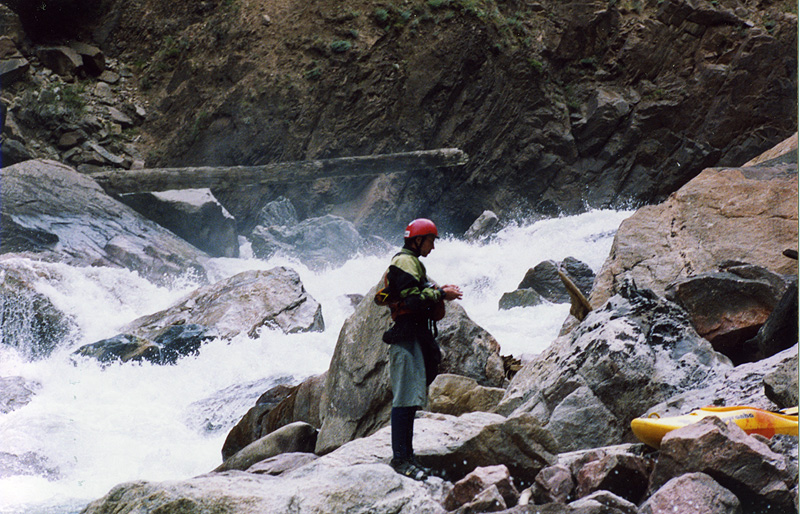

The river was reading between 1,200 to 1,300 on the Clarks Fork @ Belfrey gauge on our trip. The temperatures were in the 100's.
